Composition
COMPOSITION IS EXTREMELY IMPORTANT!
Composition is basically how to arrange the elements in your painting.
Composition is arranging the elements, particularly the big shapes within a painting.
It is not enough to just paint something that is pretty!
It is very important to place that pretty subject in the painting in the right place, taking into consideration balance, colour, contrast and the big overall shapes within the picture.
The aim is to invite the viewers eye into the painting to the ‘focal point’ before it wanders around the rest of the painting.
THE FOLLOWING ARE ONLY GUIDELINES AND ALL THES RULES CAN BE SUCCESSFULLY BROKEN,
Rule Number One:
The Rule Of Thirds:
It is a good idea to place your ‘centre of interest’ or ‘focal point’ in the position of one of the green dots.
There is also a nice little video if you want a deeper explanation.
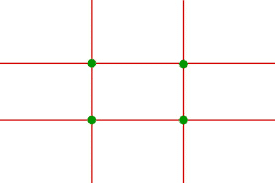

The Focal Point
The ‘focal point’ or ‘center of interest’ should in general have your darkest darks and your lightest lights in that area to attract the viewers eye to that part of the painting.
The Thumbnail Sketch
It is a good idea to make a ‘thumbnail sketch’ i.e. a small plan or rough layout of your painting , to give yourself an idea of how and what will be going into the picture, so you can decide wether the picture will be in ‘landscape format’ or ‘portrait format’ and to decide where your areas of light and dark will be to give your focal point the most impact, before you begin on your final painting.

Thumbnail using markers
Kim Casebeer shows the importance of compositional sketches and how she produces them using design markers 70% 50% 30%

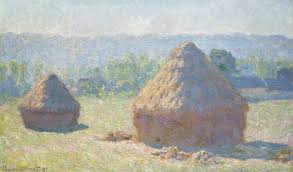
The Big Shapes
In general it is not the little details that make a successful picture, but the large shapes within the painting. Try to focus on getting this right first before concentrating on the details. You should be able to stand far away from your painting and see large 3 or 4 large areas of contrasting light and dark shapes.
Notan design
Notan means ‘The Harmony of Dark versus Light’ in Japanese.
Make a thumbnail sketch of your intended painting using a large black marker. Sketch in the areas of light and dark then try to stick to that design when paining your final piece.

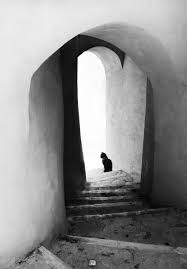
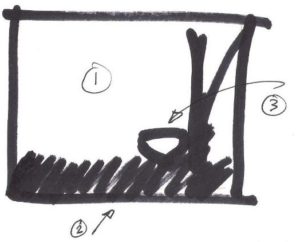
The Three Bears
Also known as ‘value pattern’ I recently came across an analogy I really like that suggests when composing your shapes to divide your space into three main areas.
- Papa bear,
- Mama bear,
- Baby bear.
For example:
- having a large area 2/3 of your picture -papa bear,
- a medium area 1/4 ish of your picture – mama bear,
- a small area 1/12 for your focal point – baby bear.
Balance
You could also consider balance within your compostion.
With your focal point in one corner of the picture, have another but weaker element in the opposite corner.

Some Common Alpha Numerical Compositional Shapes -'HALOS'

H - Shape

A - Shape
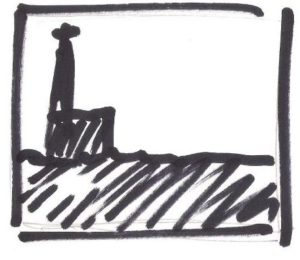
L - Shape
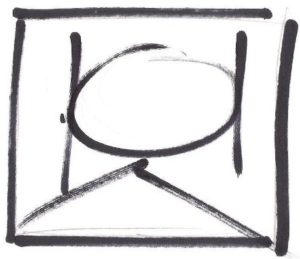
O - Shape

S - shape

H - A - S combination
Some pictures may contain any number of Alpha Numeric shapes.
Below are some ideas for composition using thumbnail sketches and Notan design:
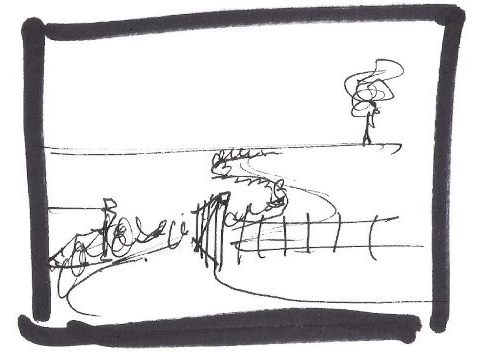
Pointing Elements
Use elements such as roads and hedges and clouds to point to your focal point.

Open the Gate
Open the gate so the viewers eye can enter the picture.
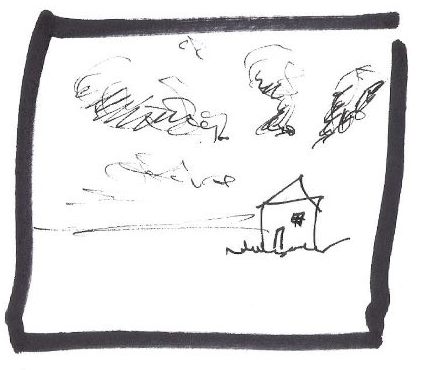
Clouds
Rather than have parallel clouds horizontally across the page, it may help to have the pointing towards the focal point.
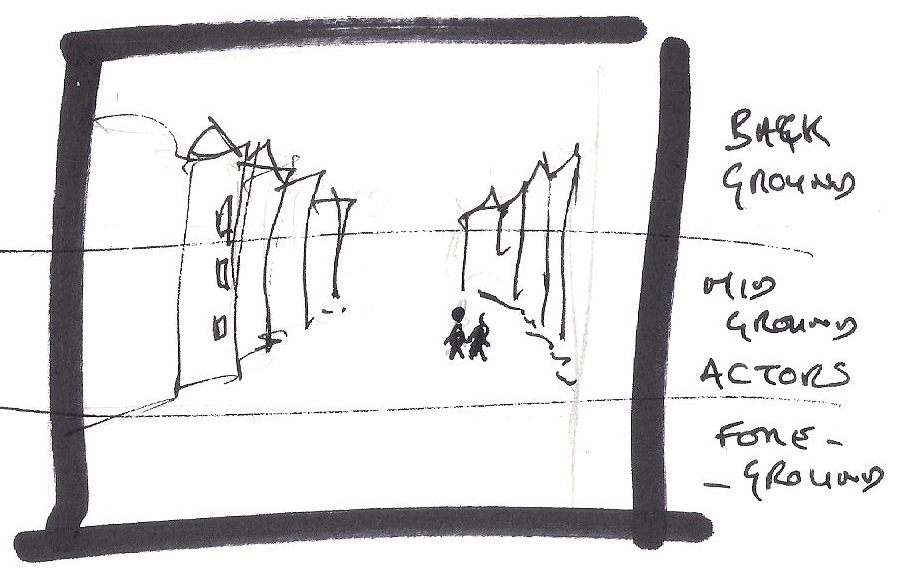
The Theater
You may like to think of your picture as a theater, with:
- a background,
- actors in the mid-ground,
- a less eye-catching foreground.
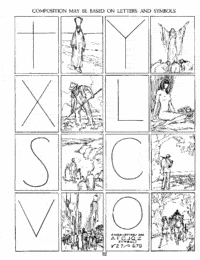
Other examples

Balance of Contrast
It is important to balance your contrast.
So you would have a dominant dark or light area in your painting.
You could have a contrasting dominance of edges , either a majority of soft or hard edges.
A contrast of linear shapes i.e. a majority of vertical or horizontal eges or shapes.
Here on the right is an excellent video by Gary Tucker giving examples of the above.
